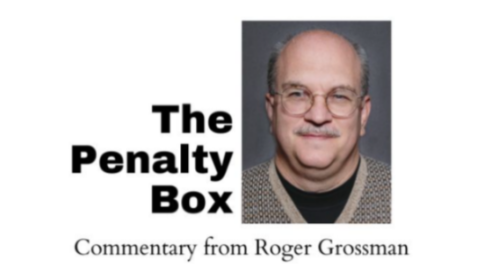By Roger Grossman
News Now Warsaw
WARSAS — As promised, I am taking a few weeks this summer to address some sports-related things that are broken and in need of immediate attention for those who can make those changes happen.
We are going to deal with a lot of different problems at all different levels of many different sports over the course of the first part of the summer, so stay with me if you don’t see me write about something you think needs fixing.
Let’s start with the now acceptable practice known as “tanking.”
When we are talking about “tanking,” we are talking about a team losing on purpose to get a better draft pick in the sport’s upcoming draft.
This is achieved in several ways, mostly at the front office and the ownership level. We should note here that we see this at the front office level and never at the field level because it’s more subtle. Losing on purpose is bad form, and no one admits to doing it, but they do it all the time — kind of like ending your work week an hour or two early to “go to an appointment,” and you never come back. Instead, you can be found on your pontoon or
perched at your favorite watering hole … while you’re still on the company’s time clock.
You get my point. If a football coach of a 1-15 football team, for example, had first and goal at the 1-yard line with :30 left in the game. Scoring would mean they win the game and end their season with two wins, but not scoring means they would lose, and they would have the number one pick in the draft.
If the coach tells the quarterback to take a knee and let the clock run out, that would be too obvious, and the league would punish the franchise for it.
What leagues need to do is create incentives for teams to want to win.
My solution: rather than let the worst team always pick first, make a rule that the team with the fifth worst record gets to pick first, the fourth worst picks second, the third worst picks third, the second worst fourth and the worst picks fifth.
Now there’s a reason for those bad teams to keep trying, and it makes the end of the season more interesting for more teams and their fans.
In relation to that, a lot of tanking happens in smaller markets.
All sports need to have revenue sharing and a hard salary cap to help stabilize the balance between bigger city teams and smaller city teams.
The argument against that is “we shouldn’t punish larger market teams by taking some of their revenue and giving it in support of smaller franchises,” and I understand that line of thinking.
But the larger markets have a vested interest in seeing all of the teams in their league thrive financially. Think about it: if the small markets fail, who will the big markets play?
The other objection is that some owners take advantage of their sport’s welfare program and don’t put enough of their own money into their own franchise.
My solution: owners have to provide proof that they spend a certain amount as a minimum contribution to their teams financial support system. Consider it a “salary floor.”
The third thing that needs fixing is baseball’s home plate collision prevention rules.
Plowing into the catcher to keep him or her from holding onto the ball and tagging the runner out has been going on for my entire lifetime and well before that, but it shouldn’t have been. These collisions are unsportsmanlike, and they don’t resemble any other thing that occurs in the game of baseball.
The injury to Buster Posey of the Giants was the last straw, and led to baseball taking the first steps to prevent those collisions and the injuries that have been following them for decades.
MLB put in rules that demand the catcher leave the runners coming home a path to home plate.
Which, on the surface, has worked. We don’t see catchers standing still at home plate getting their teeth rocked out of their jaws anymore.
But we traded that for replay reviews to see if the catcher was trying to field the ball legally while moving into the path of the runner, which they currently are allowed to do.
My solution: if the throw home pulls the catcher up the third base line, that’s not the runner’s fault — it’s the defensive team’s problem. The catcher should be prohibited from crossing into the path of the runner, and if they make contact with the runner, the runner would be automatically safe at home.
Even if they have the ball, the catcher would not be able to have any part of their body in line with the runners path to home plate. If they do, the runner is automatically safe.
This is just the beginning of my work to make sports a better place.





